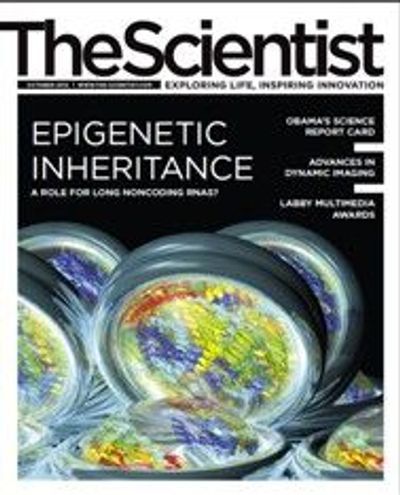Your mission, should you decide to accept it …”—the thrilling line that opened every episode of Mission: Impossible, a wildly popular spy series that ran for seven seasons, from 1966 to 1973—was thrown out for years as a conversation starter whenever somebody was asked to take on a particularly challenging job.
One year ago, the editorial staff of The Scientist heard words to that effect just a week after being told that our 25th-anniversary issue, published October 1, 2011, would be our last. LabX Media Group didn’t send us a tape that would self-destruct 5 seconds after offering to continue to publish the magazine; instead, they listened to us espouse—passionately and at length—our goal of bringing our audience engaging, unbiased coverage of the most exciting events and discoveries shaping the life sciences. And they told us that our mission was theirs, charging us to carry on.
And so...
Competition is certainly in the air these days, and especially this month, as the US presidential race enters the home stretch. With the global economy in chronic crisis, and partisan warfare in the US legislature, researchers are wondering what it will be like to do their jobs in the years ahead.
For a feature in this issue of The Scientist, the editorial staff canvassed sources from across the political spectrum to give our audience a sense of the presidential candidates’ views on science policy—past, present, and future. The article grades President Obama’s science policy/legislation/regulation performance in five areas: energy, environment, science education, health care, and space science, and briefly explores what science policy might look like under a Romney/Ryan Administration.
This month’s two Critic at Large columns argue for increased cooperation, instead of competition, both here and in the rest of the world. In “Science and Democracy," Lewis Branscomb and Andrew Rosenberg describe “a troubling disconnect between scientists and much of the rest of society,” the roots of which they ascribe to the “growing power of ideological extremes across the U.S. political system.” They announce the establishment of a new Center for Science and Democracy at the Union of Concerned Scientists, whose goal is to heal that rift.
In “Medicines for the World”Suerie Moon and Ellen ’t Hoen make the case that global competition for pharmaceutical profits is denying medications to some 80 percent of the world’s population, who cannot afford them. The authors write that “pharmaceutical R&D is increasingly a global endeavor,” and describe an ongoing effort to enact a global treaty that goes beyond international patent rights and that could not only improve the health of rich and poor alike, but also boost innovation.
In the competition to survive, the environment’s role in shaping future generations is increasingly accepted by the scientific community. How one generation’s environmental stresses might be passed on the next generation and beyond is the subject of Kevin Morris’s feature article, “Lamarck and the Missing Lnc,” about the role of long noncoding RNAs (lncRNAs), transcribed from so-called “junk” DNA, in effecting heritable epigenetic changes. The time for considering the role of the genome’s “dark matter” is ripe, following the 30+ reports just published from the ENCODE (Encyclopedia of DNA Elements) project, which argue that the majority of the “junk” is, in fact, functional.
As we said a year ago, the mission of The Scientist will always be to bring our audience the best possible coverage of breaking life science news, research, innovations, and opinions.
Mary Beth Aberlin Editor-in-Chief eic@the-scientist.com
Interested in reading more?




